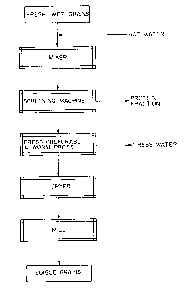Une partie des informations de ce site Web a été fournie par des sources externes. Le gouvernement du Canada n'assume aucune responsabilité concernant la précision, l'actualité ou la fiabilité des informations fournies par les sources externes. Les utilisateurs qui désirent employer cette information devraient consulter directement la source des informations. Le contenu fourni par les sources externes n'est pas assujetti aux exigences sur les langues officielles, la protection des renseignements personnels et l'accessibilité.
L'apparition de différences dans le texte et l'image des Revendications et de l'Abrégé dépend du moment auquel le document est publié. Les textes des Revendications et de l'Abrégé sont affichés :
| (12) Brevet: | (11) CA 1332799 |
|---|---|
| (21) Numéro de la demande: | 1332799 |
| (54) Titre français: | METHODE DE RECUPERATION DE FOURRAGE A PARTIR DE DRECHE DE BRASSERIE ET PRODUITS OBTENUS PAR CETTE METHODE |
| (54) Titre anglais: | METHOD FOR RECOVERING ROUGHAGE FROM BREWERS GRAINS AND PRODUCT THEREOF |
| Statut: | Périmé et au-delà du délai pour l’annulation |
| (51) Classification internationale des brevets (CIB): |
|
|---|---|
| (72) Inventeurs : |
|
| (73) Titulaires : |
|
| (71) Demandeurs : |
|
| (74) Agent: | SWABEY OGILVY RENAULT |
| (74) Co-agent: | |
| (45) Délivré: | 1994-11-01 |
| (22) Date de dépôt: | 1987-12-29 |
| Licence disponible: | S.O. |
| Cédé au domaine public: | S.O. |
| (25) Langue des documents déposés: | Anglais |
| Traité de coopération en matière de brevets (PCT): | Non |
|---|
| (30) Données de priorité de la demande: | ||||||
|---|---|---|---|---|---|---|
|
The method comprises adding water to a
basic material comprising brewers grains in a ratio
of 1:1, intensively agitating the grains and water in
a mixer in order to release soft components such as
proteins, carbohydrates and the like from the hard
roughage fraction, and feeding the resulting mixture
to a screening machine or decanter, thereby partly
separating the protein fraction present therein. The
remainder of the mixture is fed to a press where the
pressed out water is separated and an almost dry
fraction is obtained, which is thereafter completely
dried and milled to a predetermined grain size. The
raw product obtained contains 80 to 90% roughage and
less than 5% fat and lipid.
Note : Les revendications sont présentées dans la langue officielle dans laquelle elles ont été soumises.
Note : Les descriptions sont présentées dans la langue officielle dans laquelle elles ont été soumises.

2024-08-01 : Dans le cadre de la transition vers les Brevets de nouvelle génération (BNG), la base de données sur les brevets canadiens (BDBC) contient désormais un Historique d'événement plus détaillé, qui reproduit le Journal des événements de notre nouvelle solution interne.
Veuillez noter que les événements débutant par « Inactive : » se réfèrent à des événements qui ne sont plus utilisés dans notre nouvelle solution interne.
Pour une meilleure compréhension de l'état de la demande ou brevet qui figure sur cette page, la rubrique Mise en garde , et les descriptions de Brevet , Historique d'événement , Taxes périodiques et Historique des paiements devraient être consultées.
| Description | Date |
|---|---|
| Inactive : CIB expirée | 2016-01-01 |
| Inactive : CIB expirée | 2016-01-01 |
| Inactive : CIB expirée | 2016-01-01 |
| Inactive : CIB de MCD | 2006-03-11 |
| Inactive : CIB de MCD | 2006-03-11 |
| Inactive : CIB de MCD | 2006-03-11 |
| Le délai pour l'annulation est expiré | 1998-11-02 |
| Lettre envoyée | 1997-11-03 |
| Accordé par délivrance | 1994-11-01 |
Il n'y a pas d'historique d'abandonnement
Les titulaires actuels et antérieures au dossier sont affichés en ordre alphabétique.
| Titulaires actuels au dossier |
|---|
| BINDING-BRAUEREI AG |
| Titulaires antérieures au dossier |
|---|
| CHRISTIAN ZURCHER |
| RUDIGER GRUS |